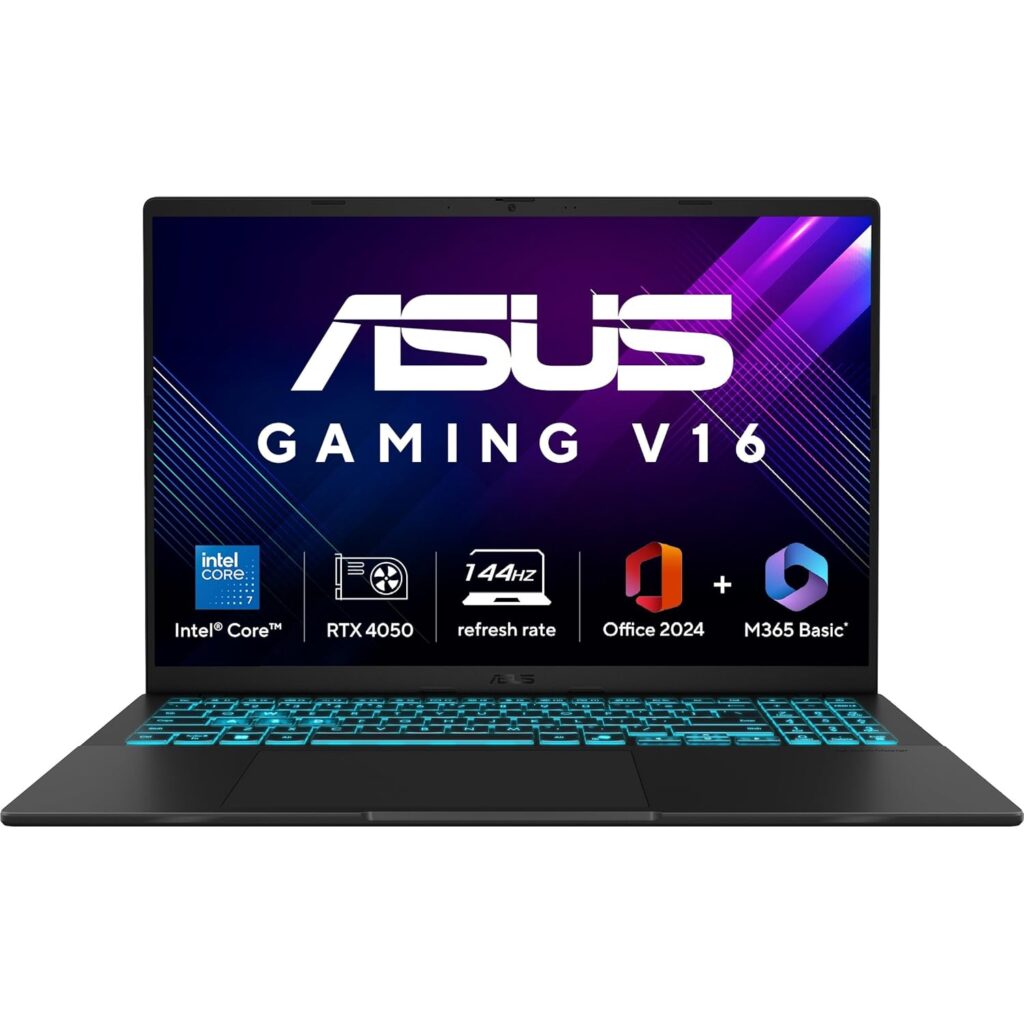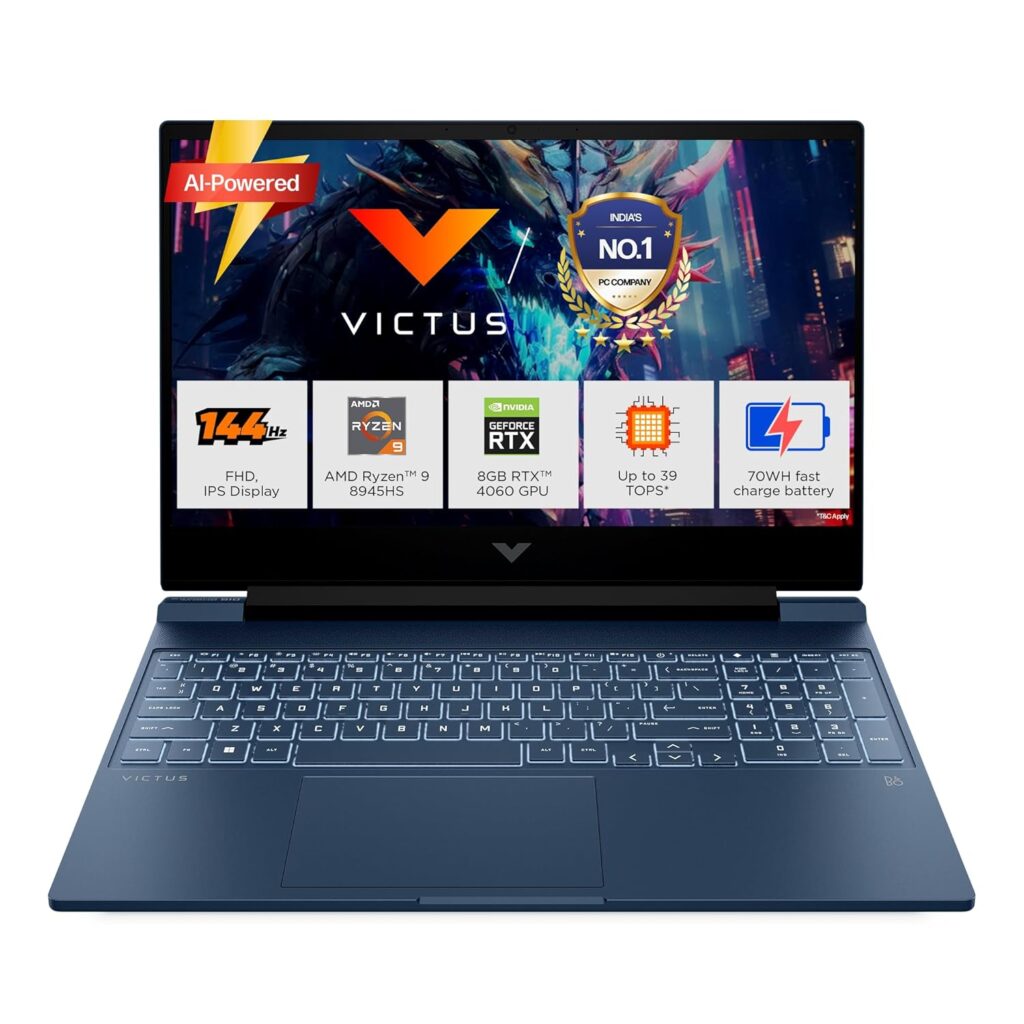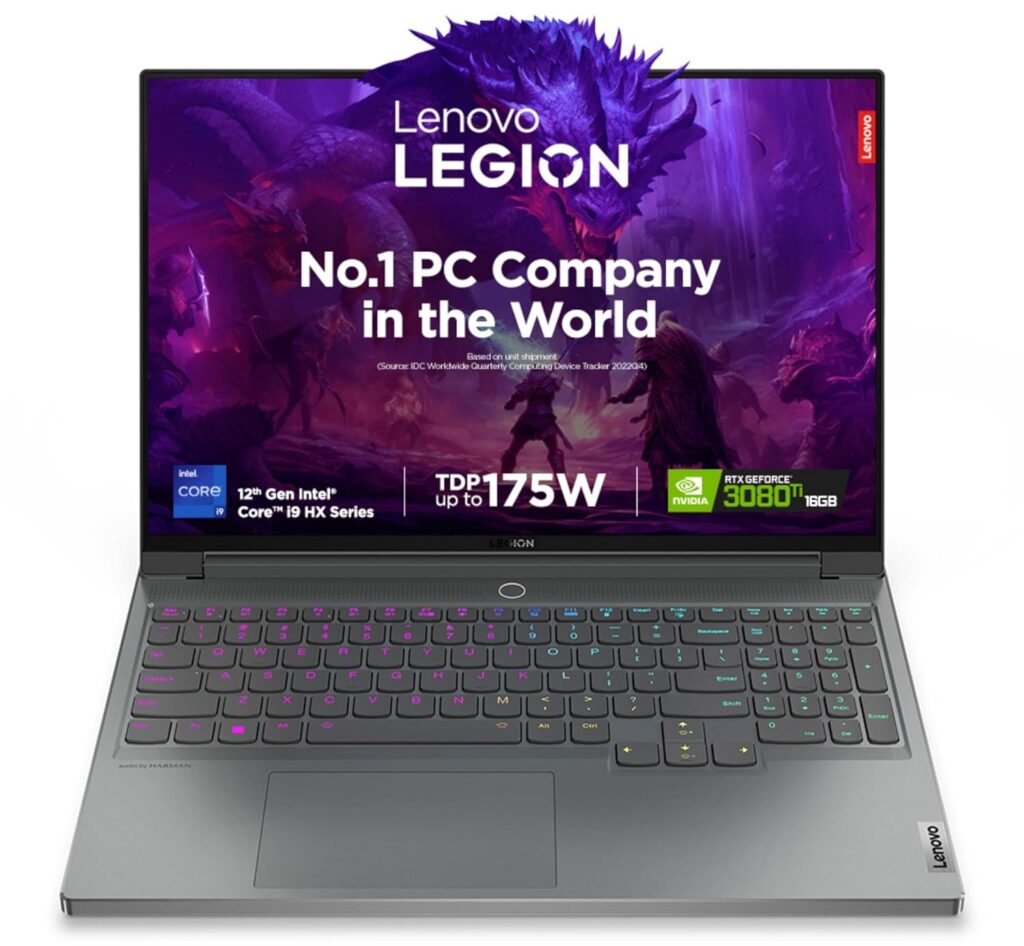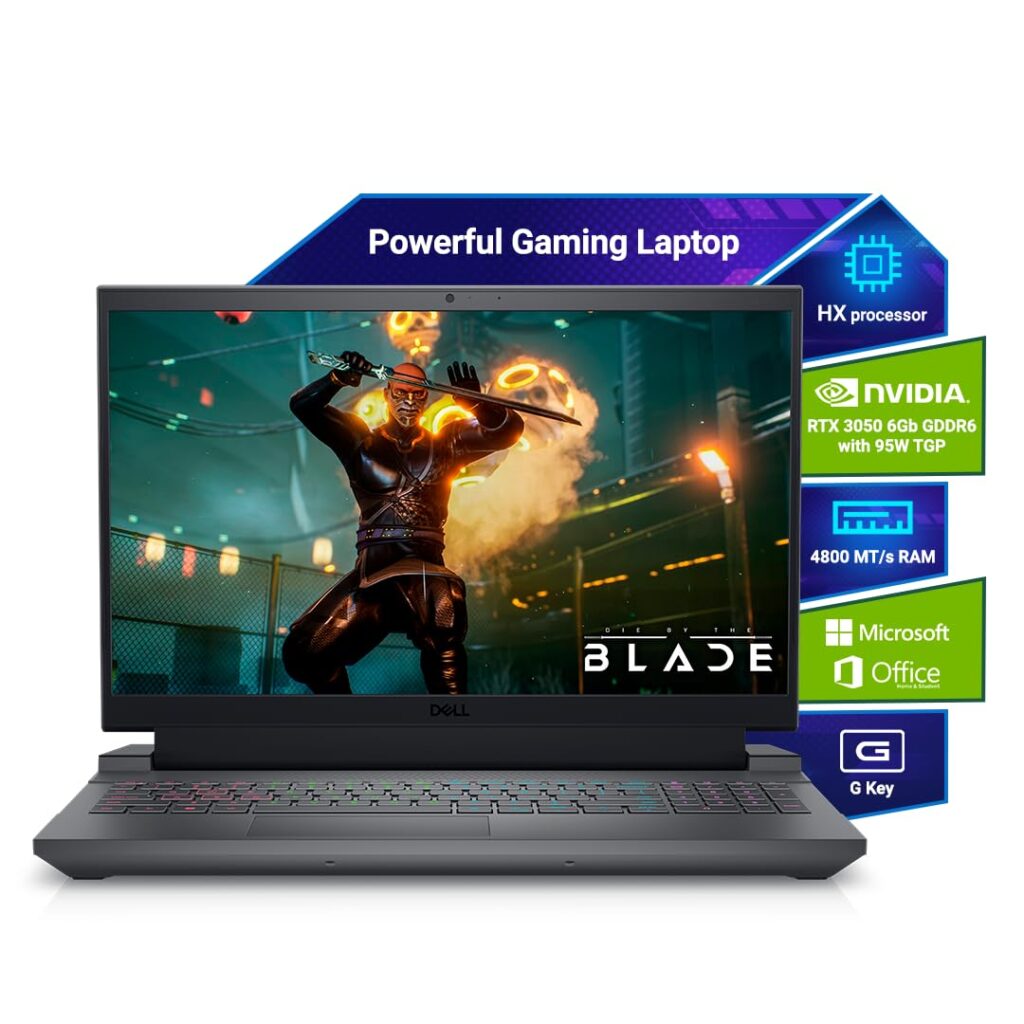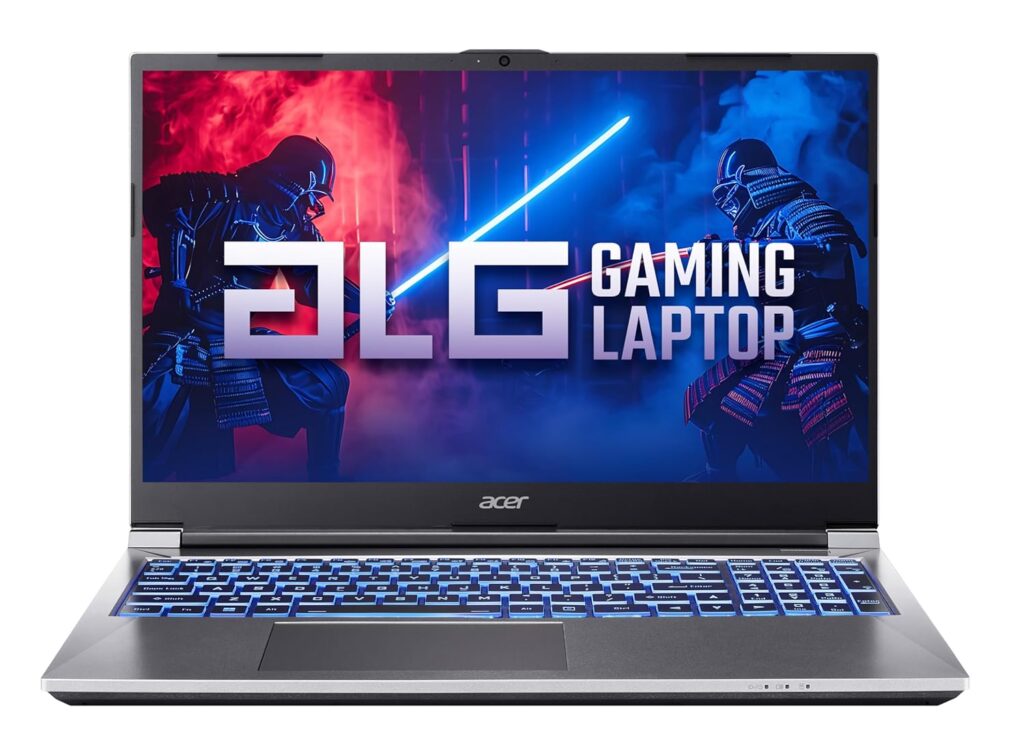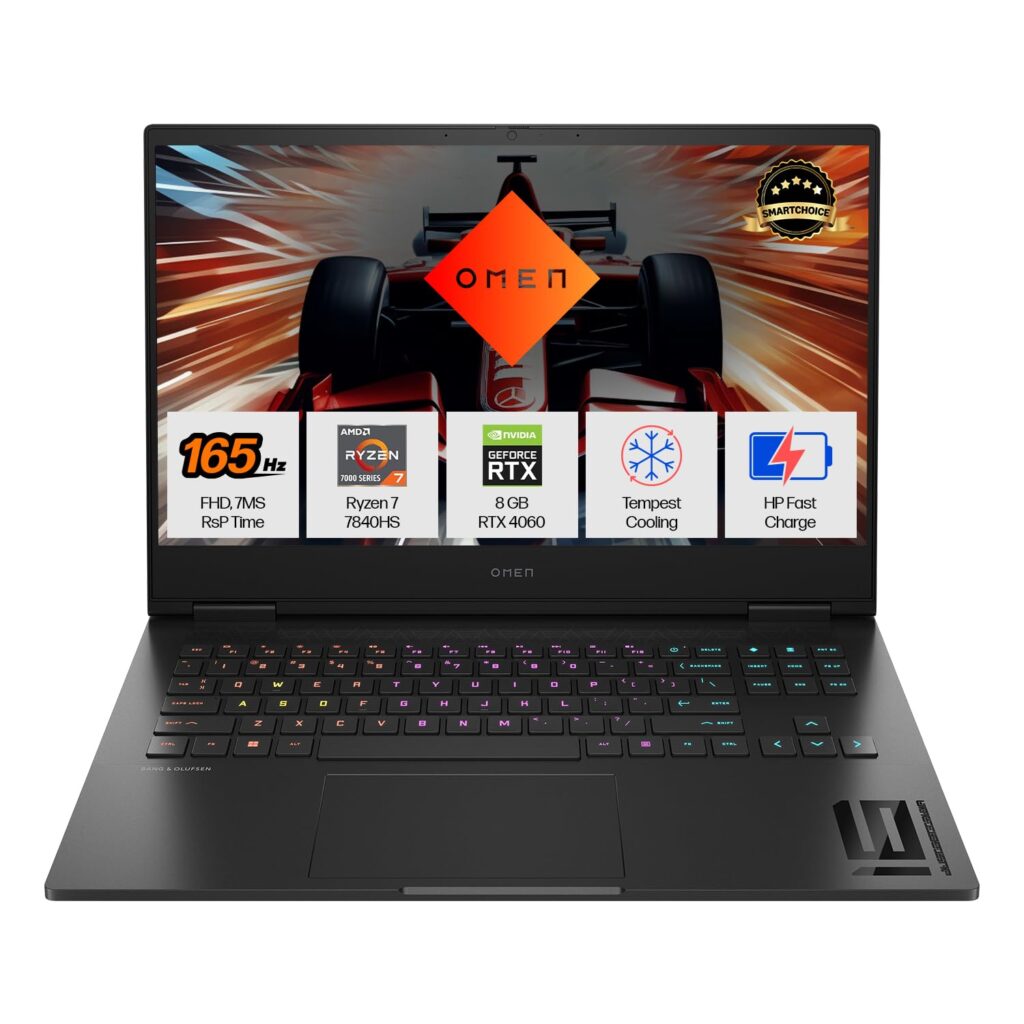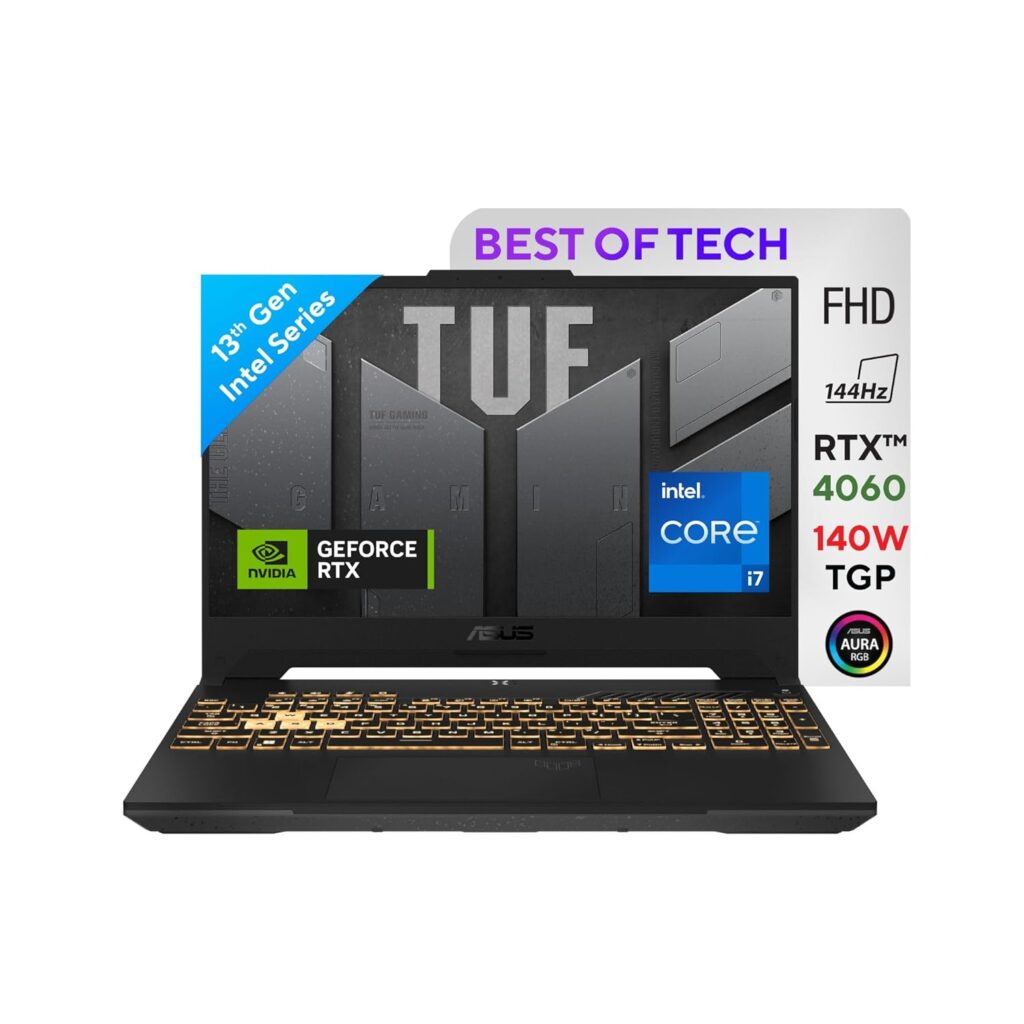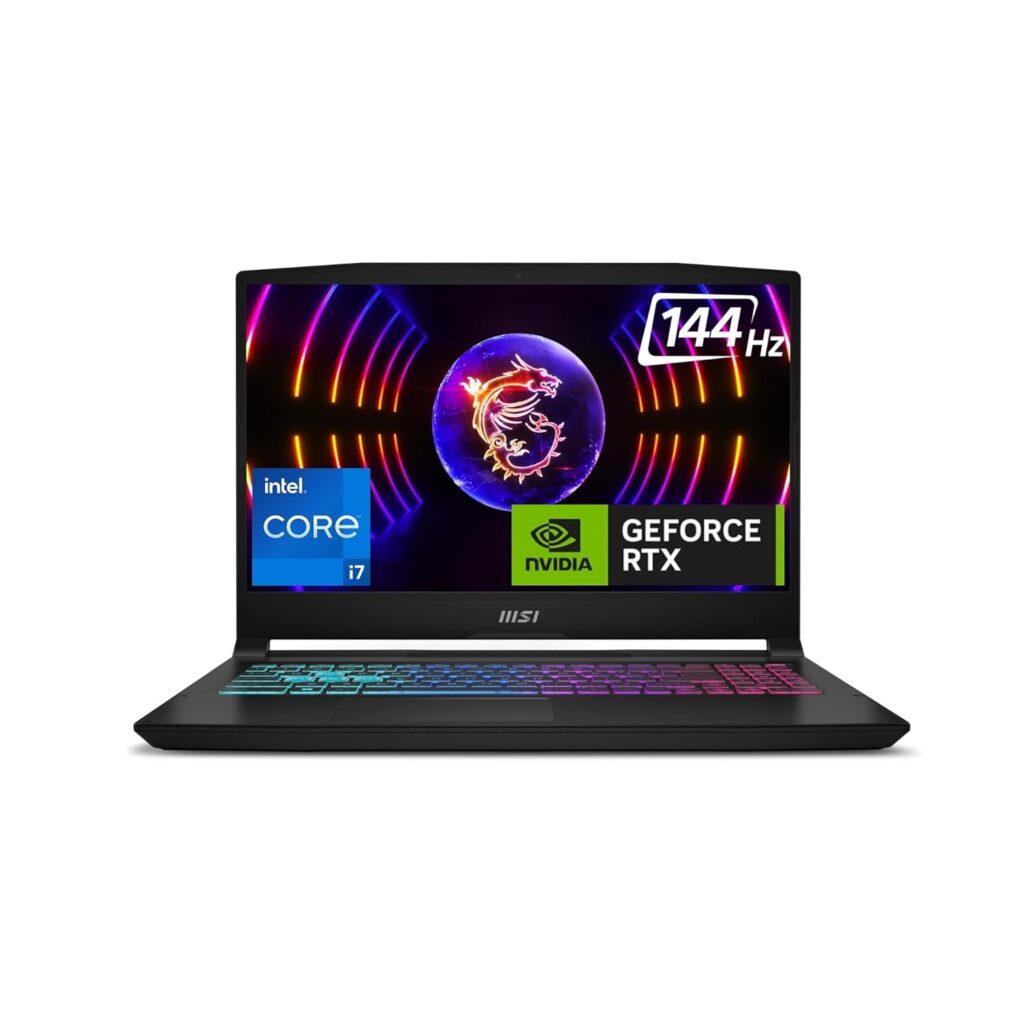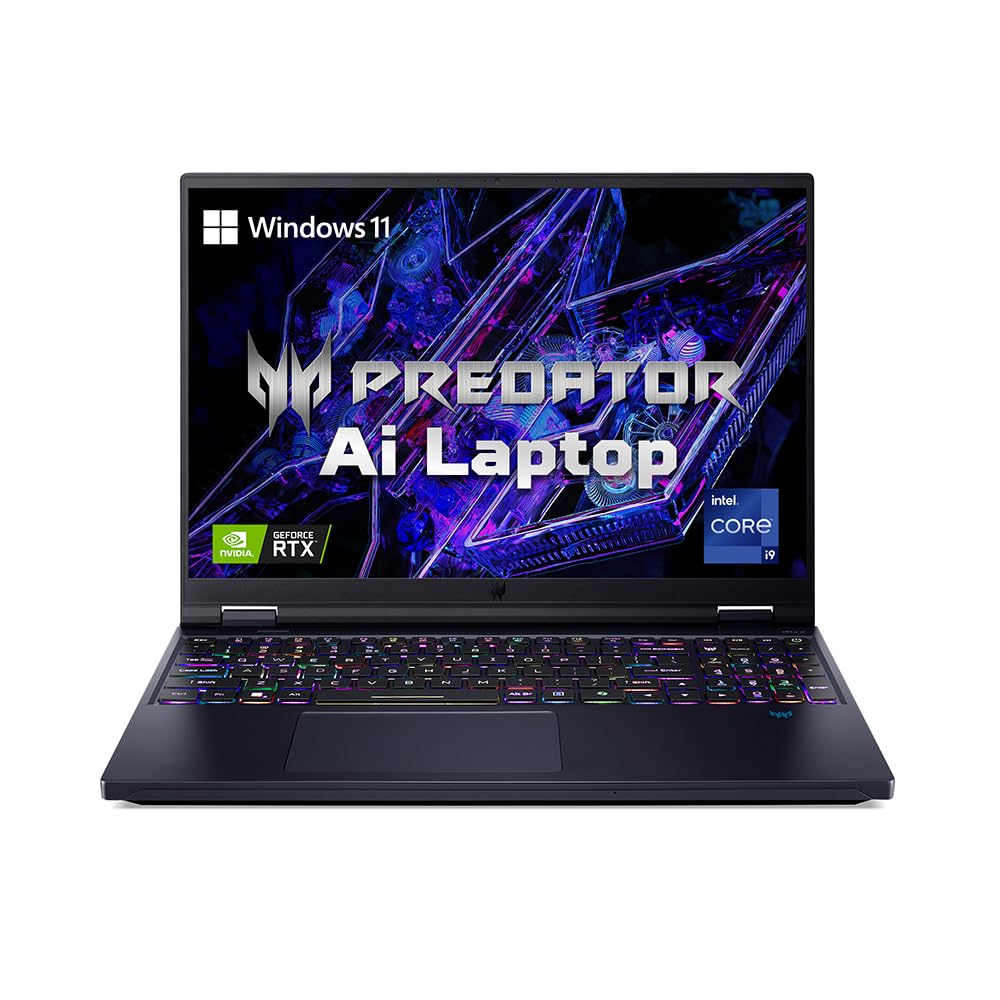For architects, a laptop is more than just a tool; it’s a creative force. Whether you’re sketching your initial concepts, fine-tuning precise details in AutoCAD, creating immersive 3D models in Revit, or producing photorealistic images in Lumion or V-Ray, your device must keep up with your ideas.
The requirements are high: managing large design files, switching between numerous apps, and offering seamless performance without pauses.
Today, the Indian laptop market provides a diverse selection of alternatives customized to these requirements.
From low-cost models capable of handling common architectural jobs to cutting-edge workstations designed for high-end rendering and VR workflows, there is something for everyone at any level of their careers and budget.
In this list, we’ve identified the Top 10 Laptops for Architects in India, which include both performance beasts and smart, cost-effective options, so you can focus on design without worrying about your technology.
What to Look for in a Laptop for Architecture Work
Before purchasing a laptop, it’s critical to understand what makes a device ideal for architectural workloads. Architecture software is challenging because it mixes creativity with complex computational duties.
Using the incorrect specifications might slow you down, limit your design possibilities, and even cause project delays. Here’s what you should focus on.
Performance (CPU & GPU)
The processor (CPU) and graphics card (GPU) are the driving forces behind your laptop’s performance. For architectural work, a strong multi-core CPU is essential.
CPU: Choose at least an Intel Core i7 or i9 (13th or 14th generation in 2025), or an AMD Ryzen 7 or Ryzen 9. These CPUs can do sophisticated calculations, 3D modeling, and rendering without bottlenecks.
GPU: A dedicated graphics card is required for rendering, visualization, and real-time walkthroughs. The NVIDIA RTX 3060, 4060, or above is recommended, while the RTX 4070/4080 is best for heavy workflows. These GPUs speed up rendering in software such as Lumion, V-Ray, and Twinmotion, reducing your wait time dramatically.
If you work a lot with real-time rendering or VR presentations, choose a powerful GPU over a slightly quicker CPU.
RAM & Storage
RAM: Architectural projects frequently need juggling numerous large files at once. The basic minimum is 16GB, but 32GB allows for far smoother multitasking—particularly for pros working with BIM models and complicated renderings.
Storage: Choose SSD storage (ideally NVMe). SSDs not only speed up your system’s boot time, but they also load and save projects in seconds, as opposed to slow hard disk drives. For large-scale projects, 512GB is a fine starting point, but a 1TB SSD is best if you work with a lot of raw render files.
Read Also: How Much RAM Do You Really Need in a Laptop Today? A Practical Guide for Every User
Display Quality
Architects rely significantly on visual correctness; thus, your display is more important than you might realize.
Resolution: Aim for FHD+ or higher-quality details.
Color Accuracy: For precise colors, look for 100% sRGB or better coverage (AdobeRGB/DCI-P3), which is especially important for client presentations.
Size: A 15.6-inch screen strikes a compromise between workspace and portability, whereas 16-17 inches offers additional screen real estate for detailed work.
Portability & Build Quality
Architects do not only operate in offices; they also visit construction sites, interact with clients, and collaborate on location. That means you need a laptop that is both durable and portable.
Weight: Less than 2.7 kg is perfect for regular travel.
Build: A metal chassis (aluminum or magnesium alloy) provides durability without adding excessive bulk.
Battery Life
High-performance laptops are not recognized for their long battery life, particularly while using rendering applications. Expect 4-7 hours for ordinary jobs and significantly less for high workloads.
Keep a charger nearby, and if you travel frequently, consider a power bank that allows laptop charging.
Software Compatibility
Ensure that your laptop can run your selected architecture software smoothly.
Design & Drafting: AutoCAD, SketchUp, and Rhino
BIM (Building Information Modeling): Revit and ArchiCAD
Rendering: Lumion, V-Ray, Twinmotion, and Enscape.
Visualization: Adobe Photoshop, Illustrator, and After Effects.
A well-chosen laptop allows you to switch between various tools without annoying slowdowns.
List of Top 10 Laptops for Architects in India
1. Lenovo LOQ 2024
The Lenovo LOQ laptop performs admirably for architectural operations ranging from intense 3D rendering to multipage presentations. Its mix of powerful hardware, color-true display, and innovative cooling technology makes it one of the most appealing options for architects looking for adaptability and value.
Specs
Processor: 13th Gen Intel Core i7-13650HX (6 Performance + 8 Efficiency cores, up to 4.9GHz)
Graphics: NVIDIA GeForce RTX 4060, 8GB GDDR6
RAM: 24GB DDR5-4800MHz (expandable up to 32GB)
Storage: 512GB SSD, PCIe 4.0
Display: 15.6-inch, FHD (1920×1080), IPS, 144Hz, 100% sRGB, 300 nits, Anti-glare
Battery: 60Wh, Rapid Charge
Build: 2.38kg, Luna Grey
Operating System: Windows 11 Home
Keyboard: 4-zone RGB backlit keyboard
Ports & Connectivity: 3 x USB 3.0, 1 x USB Type-C, HDMI, LAN, Wi-Fi 6, Bluetooth 5.2
Warranty: 1 year onsite
See the Web Story – Lenovo LOQ 2024 – A Powerful Gaming Laptop
Key Features
High refresh rate, color-accurate display for design and visual applications.
The RTX 4060 GPU provides powerful 3D modeling and rendering.
Dual-fan hyperchamber cooling and an AI chip provide sustained performance under stress.
AI Engine+ and MUX switch provide real-time performance optimization and battery management.
Rapid charging capabilities and a huge battery.
MS Office is pre-loaded, making it convenient for professional use.
Why It’s Good for Architects
Rendering and modeling power: The RTX 4060 GPU can readily handle heavy-duty architectural software such as AutoCAD, Revit, SketchUp, Rhino, and Lumion.
Display: The 100% sRGB and 144Hz IPS display provides accurate color representation as well as smooth visuals, which is vital for polishing design elements.
Memory and Speed: 24GB DDR5 RAM allows for stutter-free multitasking even with large files and multiple apps.
Thermals and Stability: Hyperchamber cooling ensures stable performance even during extended rendering sessions.
Portability: Reasonably slim for its class; ideal for office use, site visits, and presentations.
Pros
- Powerful CPU & GPU combo
- Superb color-accurate display
- Massive RAM (24GB, expandable)
- Rapid charging & advanced thermal design
- Office-ready out of the box
Cons
- FHD resolution only (no QHD/4K)
- No fingerprint reader
- Battery life average for high-performance laptops
2. Asus Gaming V16
The ASUS Gaming V16 (V3607VU) is a good mid-range option for architects in India who require a laptop that combines powerful creative performance with portability and a great display. Its RTX 4050 GPU and Intel Core 7 processor enable it to handle architecture software and modest rendering duties.
Its 16-inch 16:10 screen and innovative cooling system boost productivity and comfort during lengthy work sessions, making it an appealing choice for both professionals and students.
Specs
Processor: Up to Intel Core 7 240H (10 cores, up to 5.2 GHz Turbo, 24MB cache)
Graphics: NVIDIA GeForce RTX 4050 Laptop GPU, 6GB GDDR6
RAM: Up to 16GB DDR5 memory
Storage: 512GB PCIe Gen 4 SSD
Display: 16-inch IPS, 1920 x 1200 (WUXGA), 144Hz refresh rate, anti-glare, 300 nits brightness, 16:10 aspect ratio
Battery: 63Wh, supports fast charging
Weight: Approx. 1.95kg
Operating System: Windows 11 Home, with Microsoft Office 2024 pre-installed
Keyboard: Backlit keyboard with Turbo Blue illumination, 1.5mm key travel
Ports & Connectivity: USB 3.2 Gen 1 Type-A, USB Type-C, HDMI 2.1, 3.5mm combo audio jack, Wi-Fi 6, Bluetooth 5.3
Audio: SonicMaster with AI noise cancellation for clear communication
See the Web Story – ASUS Vivobook 16
Key Features
Powerful 10-core Intel Core 7 processor that can multitask and run creative apps with ease.
The NVIDIA GeForce RTX 4050 GPU supports real-time ray tracing and DLSS 3.0 for accelerated rendering and visualization.
The smooth and immersive 16-inch WUXGA display with 144Hz refresh rate and 16:10 aspect ratio provides extra vertical area for intricate work.
Advanced IceCool thermal technology, featuring dual 79-blade fans and an efficient heat pipe design, ensures silent and steady performance under lengthy workloads.
AI-powered noise reduction and a far-field microphone provide professional-level voice clarity during conversations and virtual meetings.
A high-capacity 63Wh battery with clever power management and fast charging allows for mobile productivity.
Why It’s Good for Architects
The RTX 4050 GPU and strong i7 CPU give adequate capability for 3D modeling, rendering, and visualization tools used in architecture, like AutoCAD, Revit, and Lumion.
The 16:10 aspect ratio display increases productivity by providing more vertical space, which is useful when working with design timelines and document editing.
The color-accurate, anti-glare display helps to alleviate eye fatigue during extended design sessions.
Efficient cooling ensures sustained performance with severe workloads, preventing thermal throttling when multitasking.
The lightweight design (about 1.95kg) makes it portable for architects who must work both in the office and on-site.
MS Office comes pre-installed, making it suitable for office duties and presentations.
Pros
- High refresh rate 16:10 display with good brightness
- Lightweight and portable for a 16-inch laptop
- Advanced cooling system with quiet operation
Cons
- Battery life is moderate under heavy use
- No fingerprint sensor
3. HP Victus Laptop
The HP Victus fb3025AX is an excellent choice for architects seeking robust desktop-class processing and graphics in a relatively portable 15.6-inch chassis.
Its Ryzen 9 CPU and RTX 4060 GPU are ideal for demanding architectural applications and visualizations, while the 144Hz IPS display provides sharp visuals.
The 16GB of RAM and 1TB fast SSD provide plenty of capacity and speed for professional multitasking. Overall, it provides an exceptional performance-to-price ratio in India for architectural professionals and serious students.
Specs
Processor: AMD Ryzen 9 8945HS (8 cores, up to 5.2 GHz max boost clock)
Graphics: NVIDIA GeForce RTX 4060, 8GB GDDR6
RAM: 16GB DDR5-5600 MHz
Storage: 1TB PCIe NVMe SSD
Display: 15.6-inch Full HD (1920×1080), IPS, 144Hz refresh rate, 300 nits brightness, anti-glare
Battery: 70Wh, fast charging support
Operating System: Windows 11 Home
Weight: Around 2.29 kg
Ports: USB Type-A, USB Type-C, HDMI 2.1, 3.5mm combo audio jack, Ethernet, Wi-Fi 6E, Bluetooth 5.2
Additional: Full-size backlit keyboard, HP Wide Vision 720p HD camera
See the Web Story – HP Victus Laptop
Key Features
The high-performance AMD Ryzen 9 mobile processor with 8 cores provides outstanding multitasking and rapid processing for architecture software.
The RTX 4060 GPU supports seamless 3D rendering, real-time ray tracing, and powerful graphical computing, which is necessary for design visualization.
16GB DDR5 RAM ensures smooth performance even with huge and complicated design files.
A 144Hz IPS display with wide viewing angles and anti-glare coating delivers crisp, color-accurate graphics for detailed work.
The 1TB SSD provides rapid application loading and adequate storage for huge project files.
Improved thermal design for more efficient cooling during lengthy rendering or simulation sessions.
Microsoft Office and Windows 11 Home have been pre-installed for easy productivity.
The solid design, combined with the backlit keyboard, promotes usage in a variety of lighting circumstances.
Why It’s Good for Architects
The strong Ryzen 9 CPU, paired with the RTX 4060 GPU, can effortlessly run demanding CAD, BIM, and rendering software such as AutoCAD, Revit, Rhino, and Lumion.
The quick 144Hz screen enhances visual fluidity while traversing 3D models and architectural walkthroughs.
Big SSDs and enough DDR5 memory allow for quick access to big model files and seamless multitasking.
Efficient cooling and a responsive keyboard improve comfort throughout long working hours.
It is priced competitively for high-end performance, making it ideal for professional architects and advanced students.
The laptop’s weight is acceptable for portability while maintaining performance.
Pros
- High-end AMD Ryzen 9 processor & RTX 4060 GPU
- Large 1TB SSD fast storage
- Smooth 144Hz IPS display with anti-glare
- Efficient cooling system
Cons
- Battery life is moderate under heavy load
- Might be bulky for frequent travel
4. Lenovo Legion 7
With an Intel Core i9-12900HX and RTX 3080 Ti, the Lenovo Legion 7 Gen 9 is a flagship powerhouse designed for professional designers and architects who want the highest level of precision and performance.
It is perfect for demanding 3D modeling, rendering, and multitasking because of its high-refresh color-accurate display, large RAM, high-end GPU, and strong cooling.
For serious experts searching for top-tier hardware that can easily handle the largest architectural tasks, it delivers outstanding value despite being heavier and more expensive than normal.
Specs
Processor: 12th Gen Intel Core i9-12900HX (16 cores: 8 Performance + 8 Efficiency, up to 5.0 GHz, 24 threads)
Graphics: NVIDIA GeForce RTX 3080 Ti, 16GB GDDR6 (175W TGP)
RAM: 32GB DDR5-4800MHz (2x16GB)
Storage: 1TB PCIe Gen 4 NVMe SSD
Display: 16-inch WQXGA (2560 x 1600), IPS, 165Hz refresh rate, 500 nits brightness, 100% sRGB, Dolby Vision, HDR400, anti-glare, G-SYNC support
Battery: 99.99Wh, supports Rapid Charge Pro (70% charge in 30 minutes)
Operating System: Windows 11 Home
Weight: Approximately 2.53kg
Ports & Connectivity: Intel Killer Wi-Fi 6E AX1675i, Bluetooth 5.1, 4x USB 3.0, HDMI, Gigabit Ethernet
Audio: Stereo speakers with Nahimic Audio technology
Cooling: Legion Coldfront 4.0 with stealth fan design
Special Features: Alexa built-in, 3-month Xbox Game Pass included
See the Web Story – Lenovo Legion Laptop
Key Features
A high-end i9 CPU with 16 cores delivers lightning-fast multitasking and software performance for demanding architectural applications.
The outstanding 3D rendering, ray tracing, and graphical computations needed for sophisticated visualization tools are provided by the RTX 3080 Ti GPU with 16GB VRAM.
With a high refresh rate and clear, color-accurate graphics, the 16-inch high-resolution WQXGA display facilitates efficient operations and improved client presentations.
Large project files and quick load times are handled with a 1TB SSD and 32GB DDR5 RAM.
Extended periods of uninterrupted creativity are made possible with a strong cooling system and a sizable battery.
Rich feature package that includes G-SYNC and Dolby Vision for enhanced visual smoothness and fidelity.
Why It’s Good for Architects
Superior Processing & Graphics: Ideal for architects who use resource-intensive applications like Revit, AutoCAD, 3ds Max, Lumion, and others.
Color Accuracy: Complete support for sRGB and HDR guarantees precise color reproduction, which is necessary for client evaluations and design validation.
Performance Under Load: During intensive multitasking and rendering, the laptop remains responsive thanks to effective cooling.
Real Estate for Large Screens: A 16-inch WQXGA panel provides the ideal ratio of workspace to sharpness.
Connectivity: During hectic project periods, architects are kept connected to networks and peripherals by extensive ports and fast Wi-Fi.
Pros
- Stunning, accurate 16-inch 165Hz WQXGA display
- Large 32GB DDR5 RAM and 1TB SSD
- Wide connectivity options and premium audio
- Best-in-class CPU/GPU combo for architects
Cons
- Relatively heavy at 2.53kg
- Price is high compared to mid-range options
5. Dell G15 5530 – Affordable High-Performance Laptop for Architects
With its 13th Gen Intel Core i7 processor and NVIDIA RTX 3050 GPU, the Dell G15 5530 delivers strong performance, making it a great option for architects who need a reliable laptop for 3D modeling, rendering, and multitasking.
It supports demanding design workloads with its color-accurate, 120Hz display and efficient thermal management technology. Its portability and performance make it perfect for architects juggling power and affordability, even though it is a little weighty for frequent travel.
Specs
Processor: 13th Gen Intel Core i7-13650HX (14 cores: 6 Performance + 8 Efficiency, up to 4.9 GHz turbo)
Graphics: NVIDIA GeForce RTX 3050, 6GB GDDR6
RAM: 16GB DDR5-4800 MHz
Storage: 1TB PCIe NVMe SSD
Display: 15.6-inch Full HD (1920×1080), 120Hz refresh rate, 3ms response time, 100% sRGB, ComfortView Plus, anti-glare
Battery: Approx. 56Wh with fast charge support
Operating System: Windows 11 Home
Weight: Around 2.65 kg
Ports: USB 3.2 Gen 1 Type-A, USB-C 3.2 Gen 2 with Display Port Alt Mode, HDMI 2.1, RJ45 Ethernet, 3.5mm combo audio jack
Additional Features: Alienware-inspired cooling system with vapor chamber, 4-zone RGB backlit keyboard
See the Web Story – Dell G15-5530 laptop
Key Features
RTX 3050 and a powerful and effective 13th Gen Intel i7 processor enable fluid 3D modeling and rendering.
Full HD display with a high refresh rate of 120 Hz and 100% sRGB for accurate and vivid colors that support intricate architectural work.
Performance remains steady under demanding workloads thanks to an innovative thermal system that includes a vapor chamber and several heat pipes.
For huge architectural projects, a 1TB SSD and 16GB DDR5 RAM offer plenty of storage and quick multitasking.
External displays and other accessories necessary for professional installations are supported by a number of connections, including USB-C with DisplayPort.
Why It’s Good for Architects
Rendering programs like Lumion or Enscape, as well as architecture software like AutoCAD, Revit, and SketchUp, can be easily handled by the potent CPU/GPU combination.
Accurate visual output and seamless navigation through 3D models are guaranteed by the display’s 120Hz refresh rate and color accuracy.
Thermal throttling during lengthy, demanding processes like rendering or simulations is avoided with an effective cooling system.
A huge 1TB SSD permits storing of big architectural data locally for fast access.
For efficient operations, having good connectivity choices makes it easier to integrate devices and set up external displays.
Pros
- Powerful 13th Gen Intel i7 and RTX 3050 GPU
- Comprehensive selection of ports, including USB-C with DisplayPort
- Smooth 120Hz, 100% sRGB display for accurate visuals
- Large 1TB SSD and 16GB DDR5 RAM for multitasking
Cons
- Not the most compact or light design
- Heavier than many ultraportables (2.65 kg)
6. Acer ALG Gaming Laptop AL15G-53 – Value-Packed Performance for Architects
An excellent mid-range laptop for architects looking for solid performance for 3D design and modeling without going over budget is the Acer ALG Gaming Laptop AL15G-53.
It is a good challenger for professionals and students who require a balance of power and mobility because of its combination of a fast 144Hz display, an NVIDIA RTX 3050 GPU, a powerful Intel i7 processor, and respectable portability.
Specs
Processor: 13th Gen Intel Core i7-13620H (10 cores: 6 Performance + 4 Efficiency, up to 4.9 GHz)
Graphics: NVIDIA GeForce RTX 3050, 6GB GDDR6
RAM: 16GB DDR4
Storage: 512GB PCIe Gen 4 NVMe SSD
Display: 15.6-inch Full HD (1920×1080), IPS, 144Hz refresh rate, anti-glare, high brightness
Battery: Approx. 50Wh, fast charging supported
Operating System: Windows 11 Home
Weight: Approx. 1.99 kg
Ports: USB Type-A, USB Type-C with DisplayPort and power delivery, HDMI 2.1, Ethernet, 3.5mm combo audio jack
Keyboard: Backlit keyboard
Connectivity: Wi-Fi 6, Bluetooth 5.2
See the Web Story – Acer ALG AL15G-53
Key Features
Powerful Intel i7 processor that is tuned for demanding apps and multitasking.
A dedicated NVIDIA RTX 3050 GPU with 6GB of VRAM effectively manages duties related to 3D modeling, rendering, and visualization.
For intricate architecture work, a smooth 144Hz Full HD IPS display with anti-glare coating provides bright, crisp images.
Quick application launches and file access are guaranteed by fast SSD storage, which also offers the possibility of expanding storage.
Portability without compromising durability is achieved with a lightweight metal chassis.
Numerous connectivity options are available, including USB-C with DisplayPort for external peripherals and monitors.
Why It’s Good for Architects
For modest workloads, the i7 CPU and RTX 3050 GPU provide strong performance for architecture software, including AutoCAD, Revit, SketchUp, and rendering engines.
Architects may work more comfortably on complex designs and presentations because of the 144Hz display’s good color fidelity.
Effective multitasking with multiple large design files and concurrent apps is made possible with 16GB of RAM.
It is a solid option for both office use and site visits due to port selection and hardware dependability.
For working professionals who are constantly on the go, a weight balance that allows for mobility without sacrificing power is crucial.
Pros
- Efficient and powerful i7 processor
- 144Hz IPS display with good color and brightness
- Good connectivity, including USB-C with DisplayPort
- Backlit keyboard for comfortable typing
Cons
- DDR4 RAM instead of DDR5
- Battery life is moderate under load
7. HP SmartChoice Omen – High-Performance Gaming Laptop Suited for Architects
Designed for architects who require a dependable and potent laptop for both creative and professional tasks, the HP SmartChoice Omen Xd0020AX provides an exceptional combination of performance, display quality, and heat management.
Its RTX 4060 GPU and Ryzen 7 7840HS CPU provide the power required for architectural visualization, 3D modeling, and rendering.
It is a highly suggested alternative for 2025 because of its huge, smooth 16.1-inch display, responsive cooling system, and quality build, especially for those looking for a gaming laptop that also functions as a sturdy architecture workstation.
Specs
Processor: AMD Ryzen 7 7840HS (8 cores, up to 5.1 GHz max boost)
Graphics: NVIDIA GeForce RTX 4060 Laptop GPU, 8GB GDDR6
RAM: 16GB DDR5-5600 MHz
Storage: 1TB PCIe Gen 4 NVMe SSD
Display: 16.1-inch Full HD (1920×1080), IPS, 165Hz refresh rate, 7ms response time, 300 nits brightness, anti-glare
Battery: 6-cell, 83Wh, supports fast charging (50% in 30 minutes)
Operating System: Windows 11 Home
Weight: Approximately 2.32 kg
Keyboard: RGB backlit keyboard
Cooling: Tempest Cooling Technology with AI-driven thermal management
Connectivity: Wi-Fi 6E, Bluetooth 5.3, multiple USB Type-A and Type-C ports, HDMI 2.1, RJ45 Ethernet
Audio: Bang & Olufsen tuned dual speakers
Bundled Software: Microsoft Office 2021, Windows 11 Home pre-installed
See the Web Story – HP SmartChoice OMEN
Key Features
Strong AMD Ryzen 7 7840HS CPU with 8 cores that can handle demanding creative workloads and multitask seamlessly.
Excellent 3D rendering, ray tracing, and modeling performance are made possible by the NVIDIA RTX 4060 GPU with 8GB VRAM, making it suitable for demanding architecture software.
For intricate architectural design, a 16.1-inch IPS display with a refresh rate of 165 Hz provides brilliant colors and fluid visual navigation.
Quick response times and seamless multitasking are guaranteed by a fast 1TB SSD and 16GB DDR5 RAM.
The laptop stays cool throughout prolonged use thanks to Tempest Cooling Technology with AI, which maximizes thermal performance.
Multi-display configurations are made easier by robust connecting options, including HDMI 2.1 and USB-C with DisplayPort.
Premium Bang & Olufsen audio and a backlit RGB keyboard improve the user experience during extended work sessions.
Ergonomic design and high-quality construction for gaming and professional use.
Why It’s Good for Architects
Strong performance is provided by the Ryzen 7 + RTX 4060 combination in programs like AutoCAD, Revit, 3ds Max, Rhino, and Lumion.
Clear, sharp, and color-accurate images are provided for thorough writing and presentations by a large 16.1-inch screen with an IPS display and a fast refresh rate.
Performance is maintained during demanding operations like simulation and rendering thanks to the cooling system.
Fast charging and a respectable battery life make it portable enough for fieldwork.
Extended working hours and client relations are enhanced by a comfortable RGB keyboard and a high-quality audio system.
Pros
- Powerful AMD Ryzen 7 7840HS with RTX 4060 GPU
- Efficient AI-driven thermal management
- Excellent connectivity (Wi-Fi 6E, USB-C, HDMI 2.1)
- Fast 1TB SSD and 16GB DDR5 RAM
Cons
- Moderately heavy at 2.32 kg
- Battery life is average under heavy use
8. ASUS TUF Gaming F15 FX507VV-LP287W – Robust Mid-Range Laptop for Architects
For architects looking for a mid-range laptop that strikes a mix between mobility, power, and display quality, the ASUS TUF Gaming F15 FX507VV-LP287W is a great choice.
For design, 3D modeling, and rendering activities that are frequently encountered in architecture, the Intel i7 processor and RTX 4060 GPU provide sufficient performance.
It is appropriate for both office and fieldwork because of its cooling system, 144Hz display, and sturdy construction, all of which allow extended work periods.
Specs
Processor: 13th Gen Intel Core i7-13620H (10 cores: 6 Performance + 4 Efficiency, up to 4.9 GHz turbo)
Graphics: NVIDIA GeForce RTX 4060, 8GB GDDR6
RAM: 16GB DDR5-4800 MHz (expandable up to 32GB)
Storage: 512GB PCIe NVMe SSD
Display: 15.6-inch Full HD (1920×1080), IPS-level, 144Hz refresh rate, anti-glare, 250 nits brightness
Battery: 90Wh, supports fast charging
Operating System: Windows 11 Home
Weight: Around 2.2 kg
Ports: USB 3.2 Gen 1 Type-A, USB Type-C with DisplayPort, HDMI 2.1, Ethernet, 3.5mm combo audio jack
Audio: Hi-Res certification, Dolby Atmos, AI noise-canceling technology
Keyboard: 4-zone RGB backlit keyboard
Cooling: Self-cleaning fans with anti-dust tunnels
See the Web Story – ASUS TUF Gaming F15
Key Features
Strong performance for architectural operations, such as 3D modeling and rendering, is provided by the potent Intel Core i7-13620H processor with the RTX 4060 GPU.
For precise design, a 144Hz IPS display with anti-glare and 250 nits of brightness provides fluid images and vibrant color reproduction.
During prolonged periods of high workload, advanced cooling with self-cleaning fans and anti-dust tunnels enhances system stability.
Longer workdays are supported by the 90Wh battery’s quick charging capability.
High productivity is supported by extensive connectivity for numerous external screens and peripherals.
In low-light conditions, a 4-zone RGB illuminated keyboard improves usability.
Why It’s Good for Architects
Demanding programs like AutoCAD, Revit, SketchUp, and Lumion are effectively operated by the i7 CPU and RTX 4060 GPU, enabling intricate modeling and rendering jobs.
Smooth navigation in 3D worlds and accurate design visualization are made possible by the 144Hz refresh rate and good color accuracy.
During extended creative periods, reliable performance is ensured by robust thermal management.
For architects who work from various places, the lightweight chassis (2.2 kg) and 15.6-inch display offer an excellent mix between portability and screen space.
During virtual meetings and presentations, excellent communication is maintained with the aid of powerful audio and AI noise reduction.
Pros
- Powerful 13th Gen Intel i7 and RTX 4060 GPU
- Efficient self-cleaning cooling system
- Comprehensive connectivity options
- Lightweight for its class (2.2kg)
Cons
- Display brightness (250 nits) is moderate
- No fingerprint sensor
9. MSI Katana 15 B13VEK-297IN – Cost-Effective Powerhouse for Architects
For professionals and students alike, the MSI Katana 15 B13VEK-297IN is a well-balanced, reasonably priced gaming laptop that also functions as a competent architecture workstation.
The 144Hz IPS display improves user experience, while its powerful CPU and RTX 4050 GPU provide seamless operation for 3D modeling and rendering applications.
The laptop is a great option for architects on a budget because of its price-to-performance ratio, even with its poor display color accuracy and moderate battery life.
Specs
Processor: 13th Gen Intel Core i7-13620H (10 cores: 6 Performance + 4 Efficiency, up to 4.9 GHz turbo)
Graphics: NVIDIA GeForce RTX 4050 Laptop GPU, 6GB GDDR6
RAM: 16GB DDR5-5200 MHz (dual channel)
Storage: 1TB PCIe Gen 4 NVMe SSD
Display: 15.6-inch Full HD (1920×1080), IPS-level, 144Hz refresh rate, 250 nits brightness, anti-glare, 45% NTSC
Battery: 53.5Wh, 3-cell Li-ion battery
Operating System: Windows 11 Home (64-bit)
Weight: Approximately 2.6 kg
Ports: USB Type-C (USB 3.2 Gen 1 / DisplayPort), 2x USB 3.2 Gen 1 Type-A, USB 2.0 Type-A, HDMI 2.1 (8K @ 60Hz / 4K @ 120Hz), RJ45 Ethernet, 3.5mm combo audio jack
Keyboard: 4-zone RGB backlit keyboard
Audio: Dual 2W speakers with Nahimic 3 sound enhancement
Connectivity: Wi-Fi 6, Bluetooth 5.2
See the Web Story – MSI Katana 15 Laptop
Key Features
Excellent multitasking and computational capacity for architecture applications are provided by this powerful 13th generation Intel i7 processor.
The NVIDIA RTX 4050 GPU provides enough rendering and ray tracing performance for moderate to demanding 3D architectural jobs.
Although the 144Hz IPS display offers a fluid viewing experience, its moderate brightness and color range might not satisfy demanding color accuracy requirements.
Quick file access and smooth multitasking with large design files are guaranteed by a fast 1TB SSD and 16GB DDR5 RAM.
During heavy workloads, the Cooler Boost 5 cooling system’s shared thermal pipes lessen thermal throttling.
A variety of connectivity choices for external screens and other peripherals.
Long work or presentation periods are made more usable and media-rich with an RGB illuminated keyboard and improved audio system.
Why It’s Good for Architects
Popular architecture programs like AutoCAD, Revit, SketchUp, and moderate rendering jobs are easily supported by the Core i7-13620H and RTX 4050 combination.
Although the 15.6-inch 144Hz IPS display makes it easy to navigate around 3D models, it may not be sufficient for expert architects who need exact color calibration.
Long hours of design and rendering work are maintained by an effective cooling system.
Simultaneous programs and large project files are supported by ample RAM and storage space.
Good portability for bringing the laptop to site visits or meetings.
Ideal for professionals and students of architecture looking for value without sacrificing necessary functionality.
Pros
- 144Hz display for smooth visuals
- Effective Cooler Boost 5 cooling system
- Large 1TB NVMe SSD and 16GB DDR5 RAM
- Powerful i7 13th Gen processor and RTX 4050 GPU
Cons
- Moderate display brightness and limited color gamut
- Plastic chassis may feel less premium
10. Acer Predator Helios 16 (PH16-72) – Premium Power for Heavy Architectural Workflows
The Predator Helios 16 PH16-72 is a high-end, future-ready option for architects working on big BIM sets, intense real-time visualization, and frequent ray-traced rendering.
It offers a balanced combination of CPU/GPU horsepower, a color-true high-refresh display, and studio-ready I/O.
Specs
Processor: 14th Gen Intel Core i7-14700HX or Core i9-14900HX, up to 24 cores and 28–32 threads depending on SKU.
Graphics: NVIDIA GeForce RTX 4080 Laptop GPU, 12GB GDDR6.
RAM: 32GB DDR5 (upgradeable; supports dual-channel configurations).
Storage: 1TB PCIe NVMe SSD (M.2), with upgrade options; some listings indicate RAID support.
Display: 16-inch WQXGA 2560×1600, 16:10, IPS, 240Hz with G-SYNC, 100% DCI-P3, up to 500 nits brightness.
Wireless: Killer 1750x Wi‑Fi (802.11be/Wi‑Fi 7 as listed), Bluetooth 5.3+.
Ports: 2x USB-C (USB 3.2 Gen 2/Thunderbolt 4 depending on SKU), 3x USB-A (Gen1/Gen2), HDMI 2.1, RJ45, microSD, audio combo jack.
Battery: 90Wh, rated up to ~6.5 hours mixed use; 330W adapter.
Weight: ~2.6–2.65 kg
OS: Windows 11 Home.
See the Web Story – Acer Predator Helios 16 Laptop
Key Features
When combined with an RTX 4080, high-core-count Intel HX processors provide optimal performance for rendering, real-time ray tracing, and GPU-accelerated BIM workflows.
For intricate model navigation and client presentations, a color-accurate 16:10 2.5K display at 240Hz with 100% DCI-P3 and G-SYNC provides both fidelity and smoothness.
Architects frequently use docking arrangements, fast external storage, and multi-monitor studios, all of which are supported by robust I/O, including twin USB-C and HDMI 2.1.
While the 330W brick supports peak loads, Wi-Fi 7/Killer networking, and a 90Wh battery enable quick connectivity and productive unplugged sessions.
Upgrade-friendly design with M.2 storage and DDR5 slots enables capacity expansion and long-term ownership.
Why It’s Good for Architects
A high-power RTX 4080 with 14th-generation Intel HX CPUs speeds up real-time visualization in Rhino/Blender/3ds Max and reduces render times in Lumion/Enscape/Twinmotion.
The 16-inch, 2560×1600, 240Hz monitor with complete DCI-P3 coverage facilitates seamless viewport performance and precise material evaluation, which are essential for details and review.
Performance is maintained over lengthy deadlines, massive BIM federations, and nighttime batch renders thanks to dependable thermals and power delivery.
When transferring huge project files or working across multiple monitors and devices in studio situations, Wi-Fi 7 and numerous ports help to minimize bottlenecks.
Pros
- 16:10 WQXGA 240Hz, 100% DCI‑P3, up to 500 nits, with G‑SYNC for fidelity and smoothness
- Strong I/O: dual USB‑C, HDMI 2.1, microSD, Ethernet; Wi‑Fi 7/Killer networking
- Upgradeable DDR5 and M.2 storage for future capacity
Cons
- Battery life ~6.5 hours mixed use; much less under render loads
- Premium pricing relative to mid‑range RTX 4060 laptops
Conclusion & Buying Advice
Three important considerations stand out when choosing the best laptop for architecture work in India in 2025: mobility, performance, and display quality.
Performance is made up of a strong CPU and a competent NVIDIA RTX GPU that work together to speed up demanding architectural applications such as AutoCAD, Revit, Lumion, and 3ds Max.
This allows for seamless multitasking and quick rendering. A fast-refresh-rate IPS or OLED panel with good color accuracy (high sRGB or DCI-P3 coverage) and sufficient brightness enables architects to see their ideas clearly and comfortably while minimizing eye strain.
Display quality is equally important. Without sacrificing power, portability guarantees that architects may effortlessly transport their device to client presentations or site visits.
Your budget and particular workflow requirements should be your main considerations when selecting a laptop. Prioritize laptops with the newest high-core-count CPUs and RTX 30 or 40 series GPUs, along with significant RAM (24GB or more) and fast SSD storage, if your profession involves extensive 3D modeling and real-time rendering.
Lighter 2D CAD or drafting jobs might be completed with mid-range GPUs and 16GB of RAM. While fixed workstations may concentrate more on display size and accuracy, professionals who are frequently on the go would benefit most from portable yet powerful laptops.
Future-proofing your purchase by choosing the newest generation hardware and upgradeable configurations can save money over time and provide lifetime value, especially given the quick advancement of architecture software towards AI advances, real-time ray tracing, and VR integration.
Purchasing a laptop that strikes a balance between state-of-the-art performance, excellent display technology, and portability guarantees that you can confidently handle the demands of future software and project complexity.
In the end, balancing these essential elements with your career goals will enable you to select a laptop that will not only satisfy your needs now but also continue to be a dependable productivity partner for many years to come.
FAQ
Is the MacBook good for AutoCAD?
AutoCAD and many other architecture-related programs work smoothly on MacBooks, particularly the more expensive variants like the MacBook Pro with Apple Silicon. However, compared to the Windows version, AutoCAD on macOS can be missing some functionality, and some plugins or specialized architecture tools might only work with Windows.
Furthermore, high-end discrete GPUs like the NVIDIA RTX series, which are useful for 3D rendering, are typically less available on MacBooks. Therefore, Windows laptops with specialized RTX graphics usually offer greater compatibility and performance for architecture workflows, even though MacBooks can be useful for architects.
Do architects need RTX graphics?
Architects, especially those who use 3D modeling, rendering, virtual reality, and visualization applications like Revit, 3ds Max, Lumion, and Enscape, greatly benefit from NVIDIA’s RTX graphics cards. AI-based rendering acceleration (DLSS) and real-time ray tracing are supported by RTX GPUs, which drastically reduce render times and improve visual quality.
RTX graphics may be optional for strictly 2D CAD work, but they are advised for more efficient and quicker performance on demanding 3D activities.
How much RAM is enough for architecture software?
Architecture software requires at least 16GB of RAM, particularly when multitasking or dealing with intricate models. 24GB or 32GB RAM is the best option for professional use when heavy 3D rendering, simulations, or multitasking numerous large applications at once are involved. This will ensure smooth workflows and prevent slowdowns.
Can gaming laptops be used for architecture work?
Yes, because they mix strong CPUs, dedicated graphics cards (often NVIDIA RTX series), high-refresh-rate color-accurate displays, and sturdy cooling systems—features helpful for CAD, 3D modeling, and rendering tasks—gaming laptops are frequently appropriate and well-liked selections for architects.
The technology of gaming laptops is built to withstand demanding graphical workloads, which fits in nicely with the needs of architectural software and makes them an affordable and adaptable choice.
Should I choose Windows or macOS for architecture?
Because of its wider software compatibility, particularly with industry-standard applications like AutoCAD, Revit, and several specialist plugins, Windows is typically chosen in the architecture field.
Additionally, Windows laptops provide superior choices for high-performance discrete GPUs (like NVIDIA RTX), which speed up 3D work and rendering. Although macOS offers great hardware and a stable environment, it may have software restrictions and fewer options for high-end GPUs.
Though Windows is frequently seen as the safer and more adaptable option for architects, the decision ultimately comes down to your software ecosystem, financial constraints, and personal preferences.
Share Now
Related Articles
Top 10 Laptops for Personal Use in India
Best Laptops for Students in India
Discover more from technicalstudies
Subscribe to get the latest posts sent to your email.



